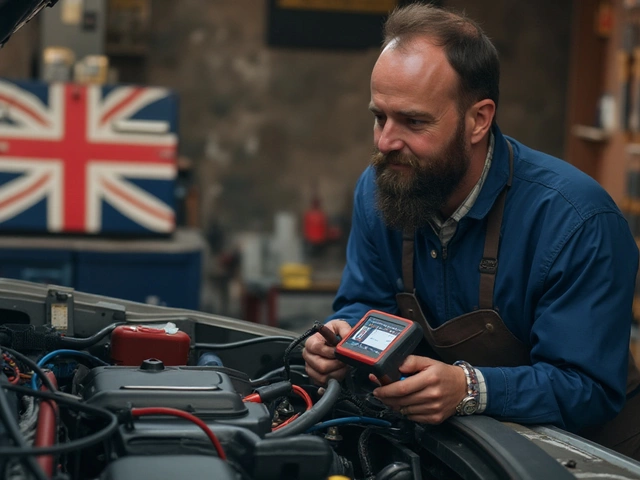Vehicle Safety: Essential Tips to Keep Your Car Road‑Ready
Driving a car that’s in good shape isn’t a luxury, it’s a must. Small faults can turn a routine trip into a dangerous situation. Below you’ll find clear, practical advice you can use right now to make sure every part of your vehicle works the way it should.
Brakes, Suspension, and Steering – The Core of Safe Driving
Brakes are the first line of defense. If you’re only changing rear brake pads, double‑check the front ones at the same time. Worn fronts can make the car pull to one side, especially when you brake hard. Look for squealing, grinding, or a soft pedal – those are clear signs the pads need attention.
The suspension connects the wheels to the car’s body. A bent suspension or bad shocks will make the ride feel “wonky” and reduce grip on wet roads. Notice a knocking sound after hitting a pothole? That’s a red flag. Driving with a bent or broken suspension not only feels uncomfortable, it can cause tyre wear, steering loss, and longer stopping distances.
Steering problems often show up as a vague heaviness or a wobble in the wheel. If the wheel shakes at speeds over 50 mph, you probably have worn shock absorbers or a loose ball joint. Fixing these issues early saves money and prevents accidents.
Visibility and Legal Must‑Knows
Clear sightlines are non‑negotiable. Windshield wipers that skip or squeak are a sign the blades are worn. Replace both blades at the same time; using just one leaves part of the glass blurry and can obscure hazards.
In the UK it’s illegal to remove the rear windscreen wiper. The MOT checks for it, and a missing wiper can lead to a fail, higher insurance premiums, or a fine. If the rear wiper motor is noisy, have it inspected before it quits completely.
Air filters often get overlooked, but a clogged filter can strain the engine and reduce fuel efficiency. While premium filters claim better performance, a good standard filter changed every 12‑15 months does the job for most drivers.
Tyre health is also part of vehicle safety. Check tread depth regularly – the legal minimum is 1.6 mm, but you’ll get better grip with at least 3 mm. Look for sidewall cracks or bulges; those indicate internal damage and can lead to a blowout.
When any of these components give you trouble, don’t wait. A quick visit to a reliable garage can catch the issue before it becomes dangerous. At Northwich Tyres Centre we offer brake checks, suspension inspections, and full MOT services, all aimed at keeping you safe on the road.
Remember, safety isn’t a one‑time checklist. Make it a habit to scan your car for problems every few weeks, especially after a hard drive or rough weather. Small checks now prevent big headaches later – and they keep you, your passengers, and everyone else on the road out of harm’s way.
 28 January 2025
28 January 2025
Signs of a Damaged Suspension: How to Identify Issues Early
Recognizing the signs of a damaged suspension can prevent costly repairs and ensure a smooth, safe driving experience. This article provides insights into the common indicators of suspension issues, such as unusual noises, uneven tire wear, and a bumpy ride. Understand the importance of routine maintenance and timely inspections to keep your vehicle's suspension in top condition. Learn tips for early detection and how to address minor problems before they become major headaches. Maintaining healthy suspension not only enhances performance but also extends the lifespan of your car.
 17 January 2025
17 January 2025
Signs Your Brake Pads Need Replacement: A Comprehensive Guide
Curious whether your vehicle's brake pads require replacing? This article delves into signs indicating brake pads need attention, from unusual sounds to changes in vehicle behavior. Discover how long brake pads typically last, factors influencing their lifespan, and tips to maintain optimal brake performance. Stay safe on the road by learning when it's time for a change.
 16 January 2025
16 January 2025
Ensuring Vehicle Safety: How to Check for Loose Suspension Parts
Checking suspension parts regularly is crucial for safety on the road. This guide helps you identify signs of loose suspension and offers a step-by-step method to inspect components at home. By understanding common symptoms and using simple tools, you'll be equipped to maintain your vehicle’s performance. Staying proactive in vehicle maintenance can prevent costly repairs and enhance safety.






0